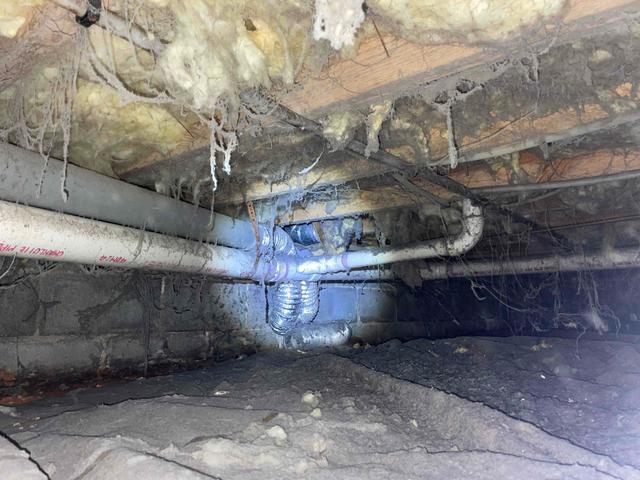
Nasty Crawl Space
Like many crawl spaces, this one is home to ductwork, plumbing, and other utility lines. Dirt, dust, moisture, and mildew build up in the crawl space creating a nasty, dirty, environment. As air rises up into the home, pollutants and allergens go with it, impacting the indoor air quality.
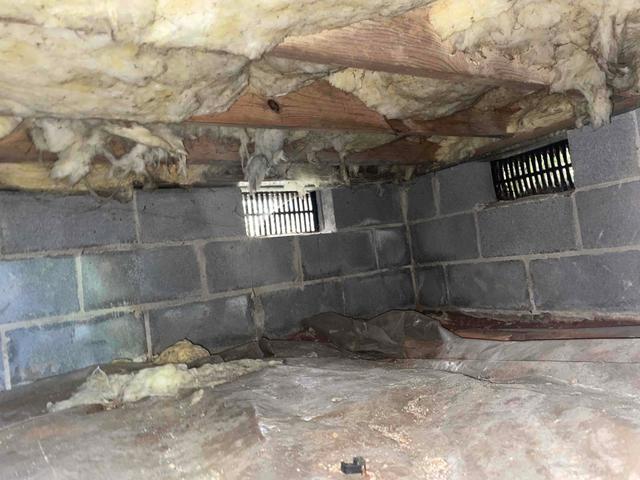
Moisture & Air Infiltration Through Foundation Vents
Moisture finds its way into the crawl space carried by warm, humid air through open foundation vents. Moisture in the earth rises up into the crawl space and seeps in from the outside through foundation walls.
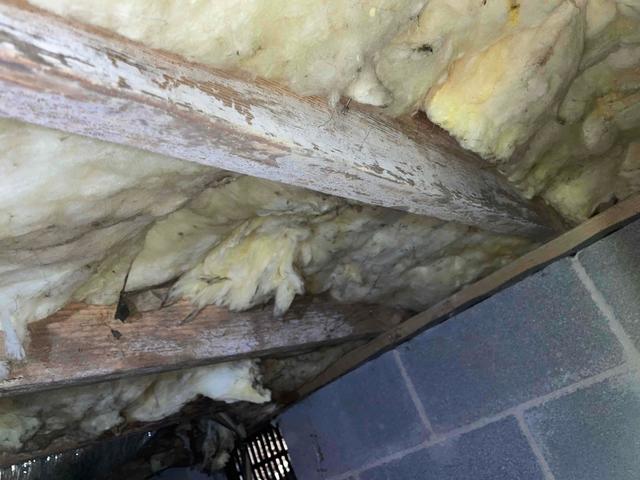
Mold & Mildew in The Crawl Space
The white growth on the floor joists is mold and mildew. It is a result of high relative humidity and warm temperatures in the crawl space. The microbial growth needs an organic food source, in the crawl space, this is the floor joists, subfloor, and paper backing of fiberglass insulation.
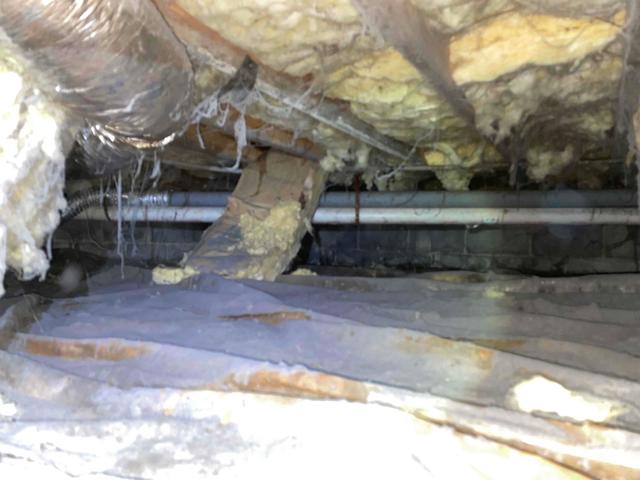
Damaged Fiberglass Insulation
Fiberglass insulation soaks up the moisture in the air becoming heavier. The moisture does a few things to the insulation, it decreases its insulation value, it causes the fibers to pull apart from one another (this is what causes it to look like it's dripping from the floor joists), and it becomes heavier causing full batts to fall away. These saturated batts also hold moisture against floor joists which helps to promote microbial growth. The bottom side of the insulation is very dirty as well, this is a result of the air in the crawl space rising up via the stack effect and the fiberglass catching some of the dirt and dust in that air acting as a "filter."
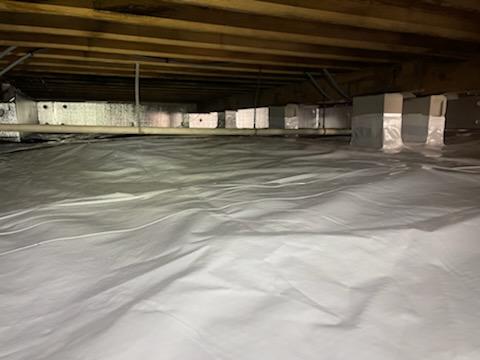
Crawl Space Encapsulation
With the crawl space sealed and insulated, a dehumidifier is installed to control the relative humidity. We've done everything we can to keep moisture out of the crawl space, but some moisture will still occur in the space so the dehumidifier will keep the Relative Humidity under control to prevent future microbial growth. This clean, healthy crawl space doesn't just mean the homeowner won't have to insulate the crawl space again, it also means a healthier indoor air quality, protection for their home, and energy savings!

Foam Board Insulation in The Crawl Space
The foundation vents are sealed and insulated, then any penetrations through the foundation wall to the outside are sealed. Foam Board Insulation is then installed on the foundation walls, this extends the thermal envelope of the home bringing the ductwork, plumbing lines, and other utility lines in the crawl space into the building envelope. In the winter it will help keep the crawl space warmer and in the summer it will help keep it cooler. Insulating from the walls also means gravity won't pull the fiberglass insulation down over time and still helps to keep floors warmer in cooler months.
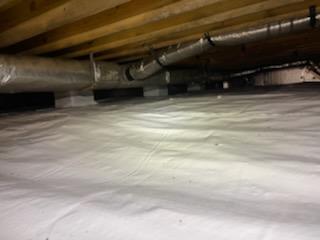
Crawl Space Vapor Barrier - CleanSpace
To address the moisture rising from the ground, and seeping through the porous block walls, a CleanSpace 10-mil vapor barrier is installed over the crawl space floor. All of the seams are overlapped and sealed, the liner is attached to the foundation walls about 6 inches above outside grade to direct water or moisture seeping through below the liner, and all of the foundation piers are wrapped and sealed. Keeping as much moisture out of the crawl space as possible is key to controlling the environment, otherwise, when the dehumidifier is installed, it would constantly run trying to battle a constant infiltration of moisture.


